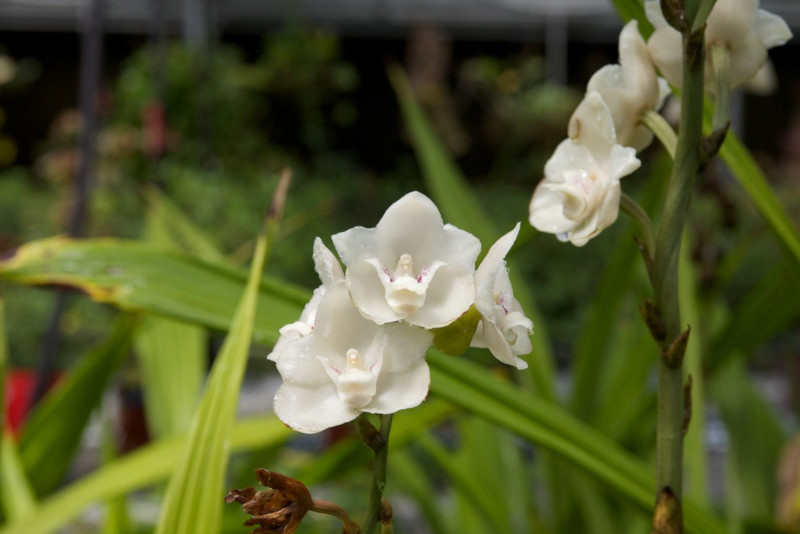
Holy Ghost Orchid Facts
- The somewhat eye-catching term of Holy Ghost Orchid serves as the most frequently used common name for a truly breathtaking type of flowering plant. The very remarkable species also remains known by various other common names, however.
- These alternate terms include such distinctive names as the dove orchid, and the flower of the Holy Spirit. In the meantime, the beautiful plant also bears the comparatively simple to pronounce scientific name of the Peristeria elata.
- It also represents the first recognized member of its genus, that of Peristeria. That fortuitous recognition of a new genus additionally occurred in 1831. The renowned English botanist William J. Hooker made the identification in 1831.
- For the moment, the IUCN does not have a listing for the beautiful Holy Ghost Orchid on its Red List of Threatened Species. Many experts nevertheless consider the delicate marvel of Nature to be in grave danger of extinction.
- This concern mainly occurs due to the rate of removal of the species from its native habitat, by collectors. It also now faces various other dangers, though. Its most pressing danger at the moment is the ongoing threat of climate change.
Related Articles
Holy Ghost Orchid Physical Description
Among its many other charming attributes, the Holy Ghost Orchid also impresses due to the visibly obvious. That’s the existence of its sheer physical size. However, that characteristic generally applies to specific individual specimens, and not overall.
That holds true due to the fact that individual plants of this variety of flora frequently quite significantly in terms of overall physical size. That further remains true since the stems of mature plants range in length from 6 in (15 cm) to an incredible 4 ft (1.22 m).
Each of these awesome flowering plants also possesses four or five relatively enormous leaves. This comparatively large foliage display a folded shape. Not only that, but it commonly attains lengths measuring as much as 3.3 ft (1 m) in overall length.
The fabulous Holy Ghost Orchid also amazes its viewers because of the nature of its blooms. In itself, that particular statement is not surprising. The lovely plant is, after all, a variety of orchid. These stunning features develop in clusters of 4 – 20 flowers.
These delicate marvels also display a fabulous pattern of color. More precisely, these display a white or light yellowish color, with red or pink spots. The inner portion possesses a structure strongly resembling a dove. This forms the basis of the common name.
- Kingdom: Plantae
- Phylum: Angiosperms
- Class: Monocots
- Order: Asparagales
- Family: Orchidaceae
- Genus: Peristeria
- Species: P. elata
Holy Ghost Orchid Distribution, Habitat, and Ecology
The truly magnificent Holy Ghost Orchid evolved as endemic to a region of the world already well known for its great natural beauty. This statement holds true because this wonder of Nature developed within a moderately large area of the world.
More precisely, the Angiosperm inhabits a range that extends from Central America to the northwestern regions of the continent of South America. Like many forms of orchid, this incredible variety also has very specific requirements for its choice of habitats.
That’s true since it appears naturally, and almost exclusively, within regions of humid mountain forests. More specifically, it appears at altitudes of up to 3,609 ft (1,100 m). In this environment, it also grows as an epiphyte, meaning it grow on the surface of another plant.
In its case, though, this surface most frequently consists of one of the most available resources in its immediate vicinity. That, of course, consists of the trunks of various trees native to the region the species share between them. These appear in prodigious quantities.
Consequently, since it evolved in this manner, the visually stunning Holy Ghost Orchid developed highly specialized characteristics. In point of fact, it acquires its nutrients and water from a combination of the air, rain, and various debris that surrounds it.
Species Sharing Its Range
Check out our other articles on 7 Geological Marvels of Asia, Pesquet’s Parrot, Madeira, Quiver Tree, Javan Rusa, Crown-of-thorns starfish, Plumed Basilisk, Black Rain Frog, Tiger Shark
